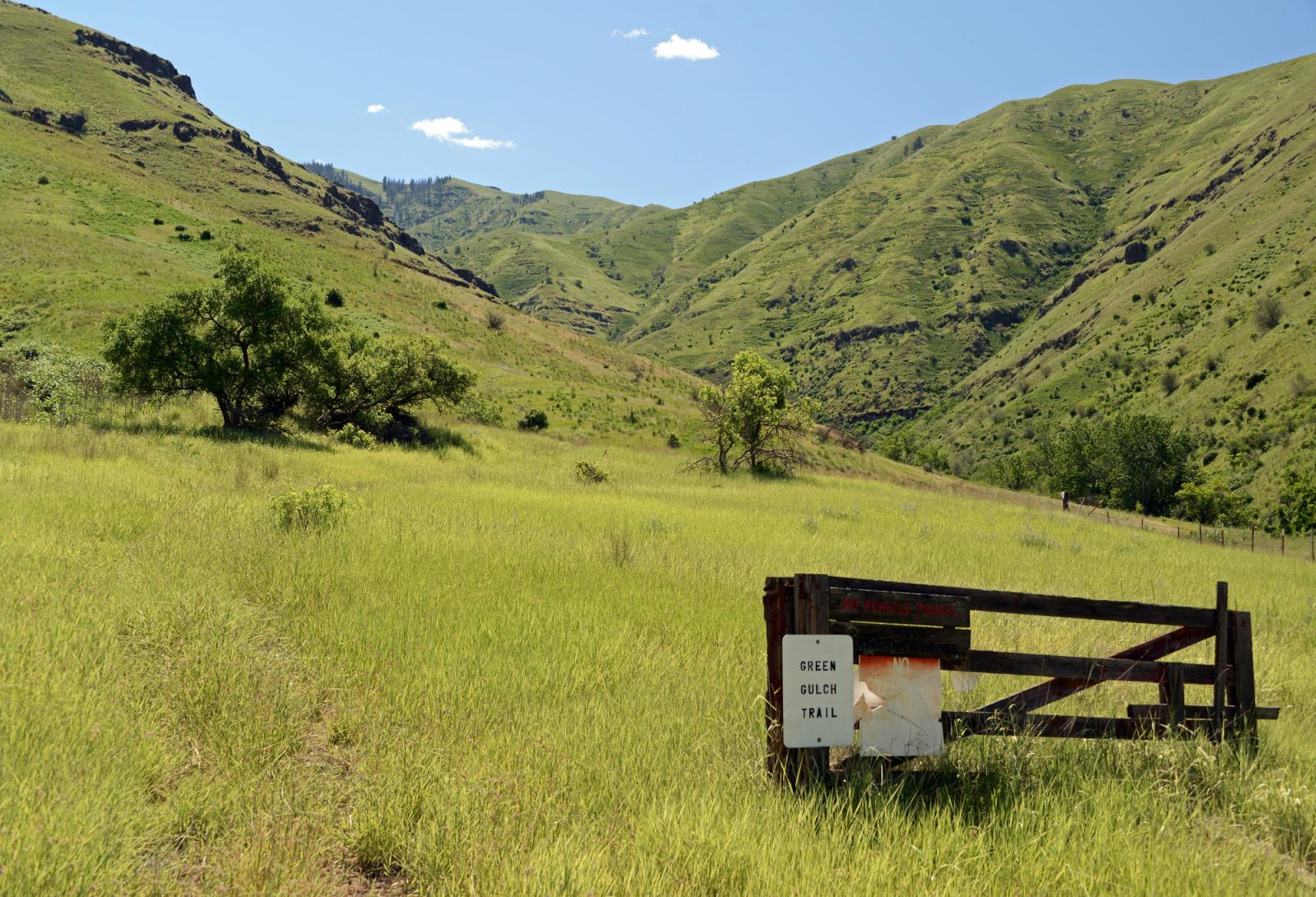Alerts
-
It is unlawful for any person to cause or allow goats or sheep to be untethered or unattended on this wildlife area unit, unless otherwise permitted by the director to do so. Read full alert

The Chief Joseph Unit is located in the southeast corner of Washington State between the Snake and Grande Ronde Rivers, straddling Joseph Creek. The area is popular with native wildflower viewing in the spring, wildlife watching in the summer and winter months, and hunting during the fall. The rugged grassland canyons support populations of deer, elk, bighorn sheep, upland birds, and raptors. It also includes quality riparian habitat that support a diversity of Neotropical migrant birds, reptiles and amphibians.
The Chief Joseph Unit is located south of Asotin in Asotin County. The unit can be accessed south of Asotin from Snake River Road.
The Chief Joseph Unit is located in the Snake River Watershed, within the Columbia River Basin, the unit lies between the Grand Rounde and the Snake rivers. The Chief Joseph Unit is surrounded by Bureau of Land Management and Department of Natural Resources lands.
This unit is part of the Chief Joseph Wildlife Area.
Game Management Units: 186, 181
Getting there
Maps and directions to WDFW-managed access points for this unit. Opens Google Maps in a new tab.
Recreation and public access
A Discover Pass is required on WDFW lands -- including water access areas, wildlife areas, and campgrounds -- unless you already have a Vehicle Access Pass issued with the purchase of an eligible hunting or fishing license. Recreate responsibly on public lands: please know the Public Conduct Rules.
Public facility information:
- Several parking areas along the Grande Ronde River and Joseph Creek
- Restrooms
Recreation and access advisories
- Motorized vehicles 48 inches and under in size are permitted to travel up Green Gulch Road to locked gate 4.5 miles up. No motorized travel permitted off Green Gulch Road. Road is open during the months of October and November only.
- This unit is open to the public year-round.
Hunting
This unit is characterized by steep canyons and brushy riparian bottoms. Since WDFW acquisition, bighorn sheep have been reintroduced, along with wild turkey. Large populations of California quail, Hungarian partridge, and chukar exist, along with native blue and ruffed grouse.
Hunting advisories
- A SAFETY ZONE is established around the headquarters building. No weapons may be discharged within this zone.
- Motorized vehicles 48 inches and under in width are permitted to travel up Green Gulch Road to locked gate 4.5 miles up. No motorized travel permitted off Green Gulch Road. Road is open during the months of October and November only.
Wildlife viewing
This unit has steep, grassland canyons and brushy riparian bottoms, offers opportunities to view a variety of wildlife, including mule deer, elk, bighorn sheep, California quail, wild turkey, Neotropical migrant and upland birds, and raptors.
Mule deer, elk, bighorn sheep, California quail, and wild turkey are commonly seen along Joseph Creek.
Search for potential birding opportunities on or near a wildlife area unit by using eBird Northwest, a citizen science database portal that provides freely-shared bird lists at 'hotspots' and interactive maps plus other birding information updated daily.
Other recreational opportunities
Trails offer opportunities for horseback riding and hiking, and this unit is popular for viewing wildflowers in spring.
Conservation
The rugged grassland canyons support populations of deer, elk, bighorn sheep, upland birds, and raptors. It also includes quality riparian habitat that support a diversity of Neotropical migrant birds, reptiles and amphibians. The Joseph Creek watershed is home to both steelhead and bull trout, both federally listed as threatened and managed as state species of concern.
Conservation goals
- Maintain healthy bighorn sheep population by communicating risks from domestic animals to the public
- Conduct an assessment of native prairie habitat by 2022; and by 2024, develop a strategy to protect and restore native prairie habitat
- Develop plan to survey entire wildlife area for rare plants by 2024
- Improve habitat for mule deer populations
Land stewardship
The Chief Joseph Unit was acquired to enhance bighorn sheep, mule deer, and upland game bird populations.
Acquisition history
The parcels making up this area were purchased between 1968 and 2021.
| Funder | Fund |
|---|---|
| Private Grantor | Private Donation |
| US Army Corps of Engineers | Snake River Mitigation Account |
| US Fish and Wildlife Service | Pittman-Robertson Wildlife Restoration Program |
| US National Park Service | Land and Water Conservation Fund |
| WA Recreation and Conservation Office | Boating Facilities Program |
| WA Recreation and Conservation Office | State Bond Account |
| WA Recreation and Conservation Office | Washington Wildlife and Recreation Program |
Management planning
2019 Blue Mountains Wildlife Areas Management Plan
Every eight to 10 years, the Washington Department of Fish and Wildlife (WDFW) revises management plans for each of its 33 wildlife areas to document current conditions, address new agency initiatives, and identify new management priorities and actions. In between those major revisions, WDFW updates plans every two years to outline short-term objectives and accomplishments. In 2014, WDFW began the process of updating existing plans, many of which were written in 2006. The new plans are being developed with significant public participation and input.
Planning Advisory Committee
Chief Joseph/Asotin Creek Wildlife Area Advisory Committee